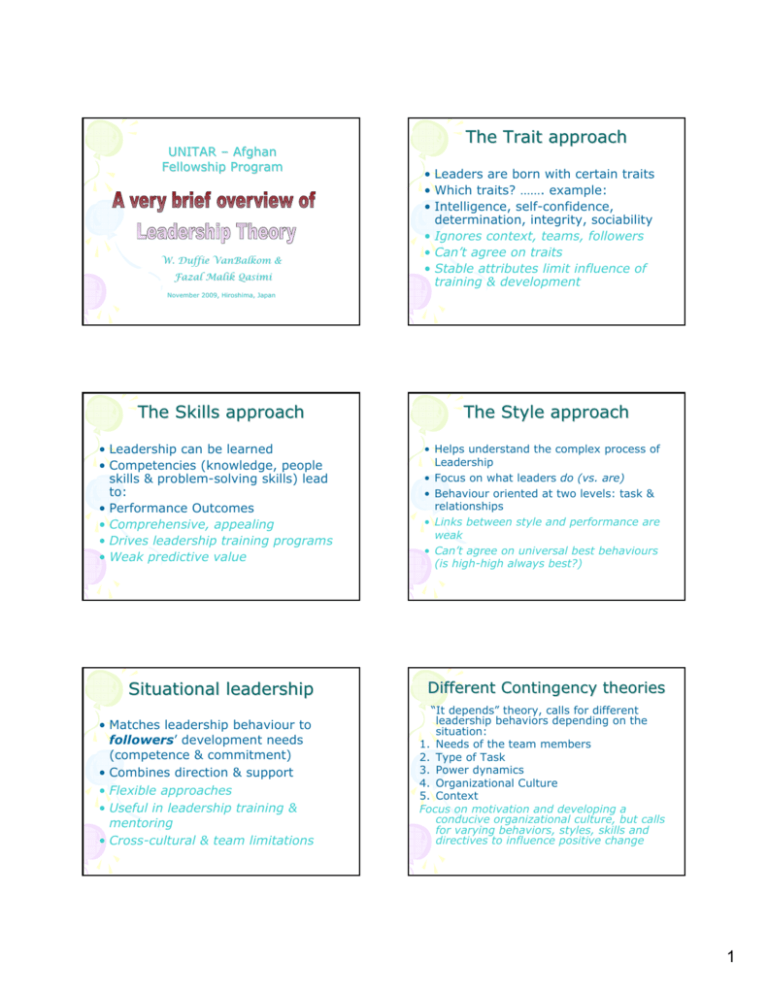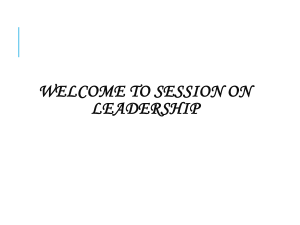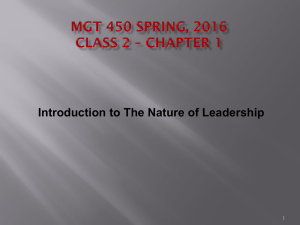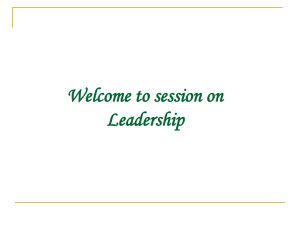The Trait approach The Skills approach The Style approach
advertisement

UNITAR – Afghan Fellowship Program W. Duffie VanBalkom & Fazal Malik Qasimi The Trait approach • Leaders are born with certain traits • Which traits? ……. example: • Intelligence, self-confidence, determination, integrity, sociability • Ignores context, teams, followers • Can’t agree on traits • Stable attributes limit influence of training & development November 2009, Hiroshima, Japan The Skills approach • Leadership can be learned • Competencies (knowledge, people skills & problem-solving skills) lead to: • Performance Outcomes • Comprehensive, appealing • Drives leadership training programs • Weak predictive value The Style approach • Helps understand the complex process of Leadership • Focus on what leaders do (vs. are) • Behaviour oriented at two levels: task & relationships • Links between style and performance are weak • Can’t agree on universal best behaviours (is high-high always best?) Situational leadership Different Contingency theories • Matches leadership behaviour to followers’ development needs (competence & commitment) • Combines direction & support • Flexible approaches • Useful in leadership training & mentoring • Cross-cultural & team limitations “It depends” theory, calls for different leadership behaviors depending on the situation: 1. Needs of the team members 2. Type of Task 3. Power dynamics 4. Organizational Culture 5. Context Focus on motivation and developing a conducive organizational culture, but calls for varying behaviors, styles, skills and directives to influence positive change 1











